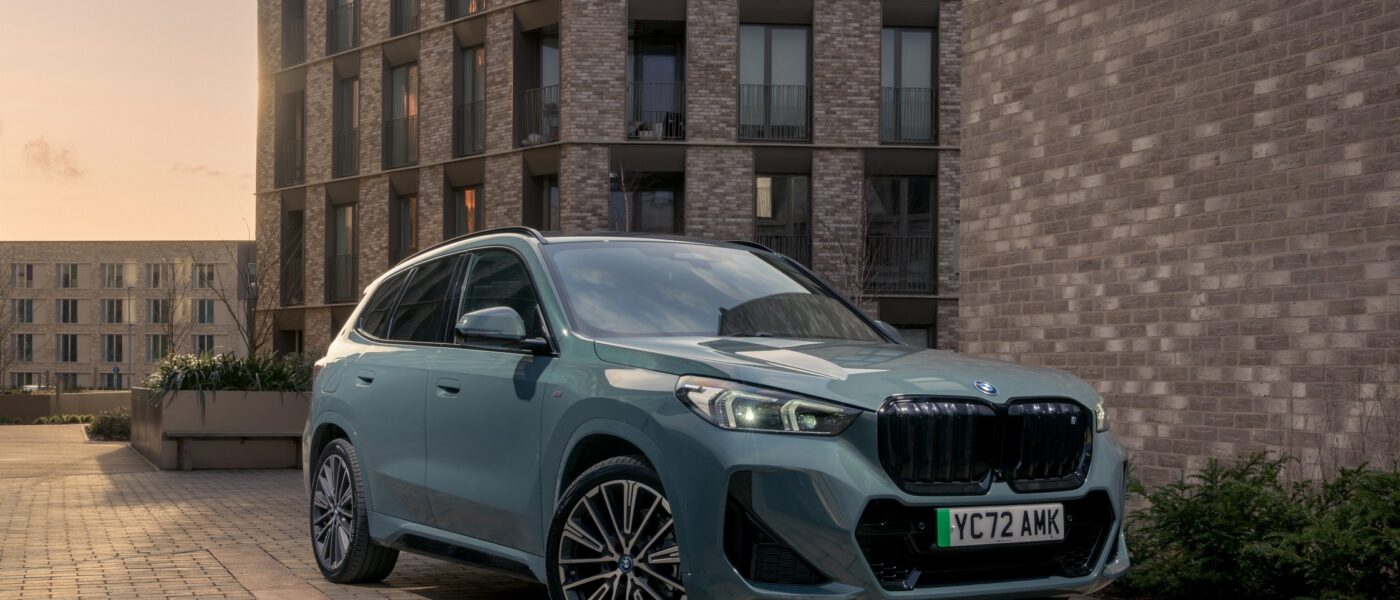BMW iX1 review: a premium box of tricks
Compact premium SUVs are big business so how does BMW’s iX1 stack up against rivals from Audi, Mercedes and Volvo?
The X1 has been a big hit for BMW over the last decade or so. The first generation helped set the template for small, premium SUVs and the second gen cemented its place, selling more than half a million units in Europe alone.
The third generation launched in 2022 bringing sharper looks, new technology and, importantly, an all-electric four-wheel-drive powertrain. Then late last year BMW expanded the line-up with a more affordable two-wheel-drive variant.
With the iX1 the entry point into BMW’s electric range, and after testing the related but more expensive and more powerful iX2, I thought it was only right to try out this cheaper, simpler version for myself.
Design, interior and technology
While the iX2 is all about continuing BMW’s futile efforts to build a good-looking coupe-SUV, the iX1 is a straightforward boxy SUV and is all the better for it.
The now traditional massive kidney grille actually fits well into the upright front end with its deep air intakes. Just make sure you opt for the gloss black trim that comes with the M Sport Pro package rather than the standard-fit chrome. Behind that is a resolutely traditional SUV shape – flat sides with recessed handles and carefully positioned creases to give some definition, plus a squared-off, upright tail.
The swoopy-roofed iX2 actually has more boot space (525 litres v 490 litres) thanks to its longer body, but the loss of 35 litres is arguably worth it for a far more attractive car and the iX1 still has plenty of space for most family’s needs.
The interior is a similar story. There’s reasonable space for a couple of adults up front and a couple of younger passengers in the back, but rear legroom isn’t particularly generous for the longer-legged.
Design-wise the iX1’s interior is fairly simple but well-thought out. The floating centre console and upright wireless phone chargers help create an open feeling in the front and BMW hasn’t gone overboard with ultra-modern flourishes. Instead there’s a decent mix of mostly high-quality materials and a simple, logical layout dominated by two digital screens – 10.25-inch instruments and a 10-7.inch media system. It’s a practical and user-friendly space, although the lack of the iDrive rotary controller for the infotainment and the lack of any physical heater controls are both a disappointment.
All iX1s get the latest OS 9 running the infotainment, bringing a new-look, simplified home screen and quicker access to key functions, as well as a host of connected services including live traffic data. The optional Digital Premium package brings music, TV and film streaming, plus gaming to the vehicle. Standard driver assistance includes remote parking assist, lane departure warning and cruise control but extras such as adaptive cruise and head-up display will cost you extra.
Battery, motor and performance
The iX1 is offered in two quite different powertrain configurations – there’s the eDrive20, which I’m driving here, and the xDrive30 which gets an extra motor and a heap more power.
Both versions use a 64.7kWh battery but this lower-powered option ekes up to 293 miles of range from it rather than the 272 of the xDrive model. DC charging at 130kW means a 10-80% top-up should only take 29 minutes and the iX1 supports AC charging up to 22kW.
The eDrive20 features a single 201bhp/182lb ft motor on the front axle which should get the iX1 from standstill to 62mph in 8.6 seconds. That’s distinctly slower than the all-wheel-drive model but who really needs their family SUV to hit 62mph in 5.6 seconds?
Realistically, the eDrive20’s performance is adequate for most day-to-day use. There’s still a sharp initial response to the throttle and it’s only under prolonged acceleration that its relative lack of oomph is obvious.
And the lack of the extra motor pays off in other ways, with the eDrive feeling distinctly lighter and sharper. It’s only a matter of 140kg but the single motor version feels less bulky, has a sharper steering feel as well as riding better over the Cotswolds’ crumbling roads. There’s a slight underlying firmness that rival cars disguise better but the iX1 makes up for this with superior body control.
Price and specification
The iX1 starts at £46,205 for a two-wheel-drive Sport trim car. An extra £2,000 moves up to XLine, while the M Sport car I drove comes in at £51,000 before options. Every model gets LED lights, dual-zone air con, the two-screen Live Cockpit, cruise control and a parking camera. To that, M Sport adds cosmetic enhancements, 19-inch alloys, heated seats and Alcantara upholstery. But if you want the gloss black trim, sports seats and adaptive suspension you’ll need to fork out £2,400 for the ‘Pro’ pack. And simple features such as keyless entry/start and auto dimming mirrors are also bundled up in four-figure options packs which can push the price up quickly.
An equivalent Mercedes EQA is within a few hundred pounds of the Beemer, as is an Audi Q4 e-tron, but the Volvo EX40 is £5,000 less for a standard range model and even the extended range version is nearly £4k cheaper.
Verdict
BMW’s latest line-up of EVs is a pretty impressive bunch and the iX1 continues the trend. It’s better to drive than its direct rivals, offers decent space and range and isn’t as challenging to look at as some current Beemers. While the hot hatch pace of the xDrive model sounds like fun, the eDrive20 is more efficient and £6k cheaper, making it the one I’d go for.
BMW ix1 eDrive20 M Sport
- Price: £50,050 (£58,070 as tested)
- Powertrain: single-motor, front-wheel-drive
- Battery: 64.7kWh usable
- Power: 201bhp
- Torque: 182lb ft
- Top speed: 106mph
- 0-62mph: 8.6 seconds
- Range: 268-296 miles
- Consumption: 3.76m/kWh
- Charging: up to 130kW
